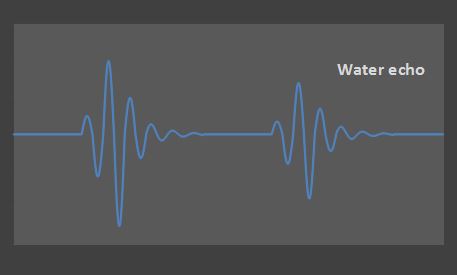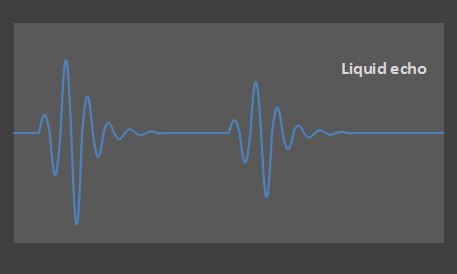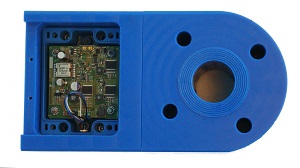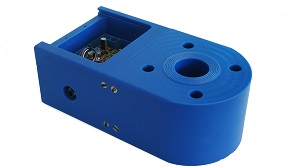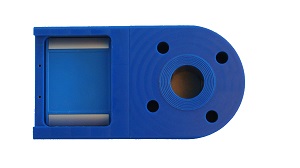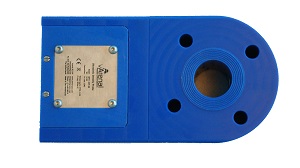Ultrasonic spectroscopy is the science of the behavior of ultrasonic wave propagation, due to changes in the environment. In most cases, ultrasonic pulses (high-frequency sound) are fired into the medium and the returning echoes are evaluated on a computer. This technology is widespread in nature (bats and dolphins use this technology to detect movements or objects in their surroundings), in fishing (to detect schools of fish or determine sea depth), in medical applications (while observing unborn children in the womb or for other medical applications), and in industry for ultrasonic flowmeters or Non-Destructive Testing (NDT) applications.
Arenal PCS studies its behavior to determine the properties of fluids. The fact is that all fluids absorb, reflect, and transmit ultrasonic pulses differently. Since in most processes with pipes or tanks the same type of liquid is present, it is possible to determine the concentration of dissolved or suspended solids, temperature, and density..
Since ultrasonic spectroscopy…
- is a physical property and a non-destructive technology
- does not consume chemicals or reagents
- is small in size and lightweight
- can measure at a repetition frequency of 1000 Hz
- can measure at a distance
- can be made intrinsically safe or explosion-proof
- can be made for sanitary applications
- can be used underwater
- can be used at high or low temperatures
- does not need consumables
- does not drift and requires little or no recalibration or frequent maintenance
- can be manufactured in different shapes and materials
- consumes very little energy
…this is one of the process analysis technologies of today and the future.
What products are required for ultrasonic spectroscopy?
A complete setup for ultrasonic spectroscopy always consists of the following parts:
- Process Control Analyzer (PCA)
- PCA to UDT 2x2 cable
- Ultrasonic Density Transmitter (UDT)
- UDT to UDP coaxial cable
- Ultrasonic Density Sensor (UDP)
- Teflon or POM sampling blocks
How it works:
The PCA is a ProFace HMI-based PLC/analyzer that retrieves measurement data from the transmitters connected in the field. These data are validated and calculated into client-specific parameters such as density, mass flow, efficiency, or anything else. The PCA visualizes these results and handles connectivity with other PLCs.
While powering the PCA, the PCA powers the UDT. In the UDT, voltage pulses are created and sent through the coaxial cable to the UDP. The UDP is the ultrasonic density sensor and consists of a piezo-sensitive material, which reacts strongly to the pulse, generating ultrasonic waves. These waves are transmitted into the probe. At the changes of acoustic impedance from one material to another, part of the echo is reflected back to the piezoelectric element. These ultrasonic waves, almost like magic, are converted into a voltage signal, like a sine wave. The sensor is made in such a way that many reflections are formed and converted. These are measured and stored in the UDT. The results are averaged, and the deviation coefficient is determined for further analysis.
As mentioned earlier, measuring the acoustic impedance of materials is one of the key properties we analyze. But also, the speed of sound in the material is of utmost importance. By combining these measurements, the physical property of the material’s (or fluid’s) density is determined with precision. Additionally, by measuring the attenuation or damping of the signal, the concentration of suspended solids is also determined.
Echo explanation:
One of the echoes returning to the piezo is from the reflector. In water, the echo looks like the one above. The shape of the echo depends on the type of transducer and the pulse generator setup.
At a certain moment, the echo returns to the piezoelectric element. The wave vibration is converted into a voltage amplitude, and the transmitter reads it. A little later, a second echo returns to the transmitter, which is a reflection caused by the first echo. It is weaker because the sensor, the piezoelectric element, and the water absorb some energy.
Suppose we insert the probe into salt water. The following graph is formed:
The echo returns earlier to our unit. That means the speed of sound is higher than in freshwater. Since this is a physical property of salt, by performing multiple calibrations we can determine the salt concentration. Such calibration is valid forever, as long as the medium is salt water. Suppose the salt water contains sand, which is present at the sensor. The height of the echoes will decrease significantly, which is recorded in the transmitter, and the % by weight of suspended solids is determined. In the case of air bubbles, reflections increase, which otherwise would not be possible. An alarm is triggered, as the echo may occasionally be lost. By combining ultrasonic spectroscopy with other analytical measurement technologies such as conductivity, pH, and UV-VIS spectroscopy, Arenal can determine dissolved solids concentrations in even more liquids.
Applications: Besides the applications on this website, Arenal focuses on:
1. Monitoring slurry density to replace nuclear analyzers. Applications can be found in mining, dredging, and drilling. Below you can see four images of a 1-1/2” wafer flange to monitor slurry density, TSS (Total Suspended Solids), and TDS (Total Dissolved Solids). For larger pipe diameters, only density monitoring is offered. The electronics are integrated in a small waterproof junction box and encapsulated in a polyethylene housing to provide solutions for submersible applications. Multiple sensors can be added to the wafer, e.g., pressure and flow.
2. Monitoring the concentration of many industrial chemicals, such as bases, salts, acids, oils;
3. Monitoring contamination in pure liquids, such as distilled/deionized water, with alarms in case of changes;
4. Tracking complete processes, such as mixing, crystallization, sedimentation, separation;
5. Monitoring spills in sewer lines or river water monitoring;
6. Monitoring COD (organic contamination) in wastewater lines for WWTP plants and various industries.

 Français
Français  Español
Español  简体中文
简体中文  Arabic
Arabic 
